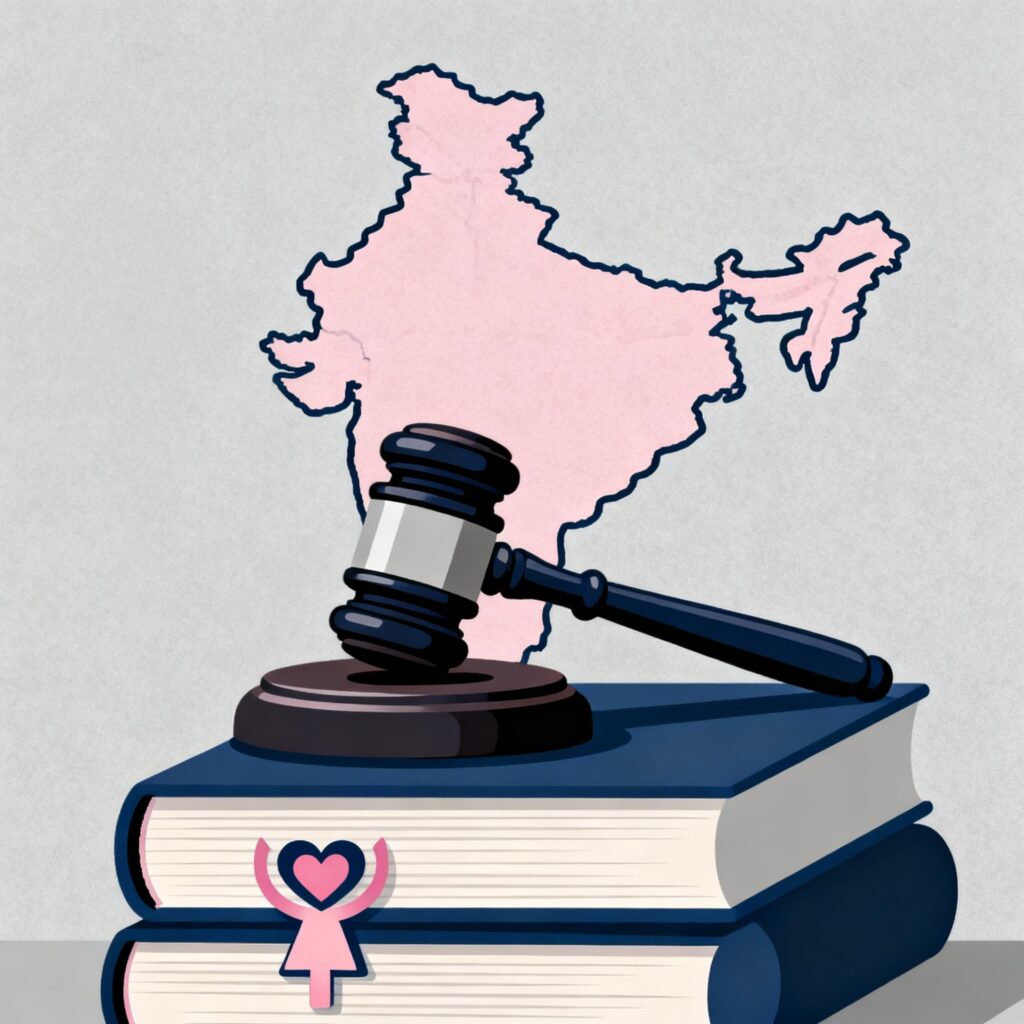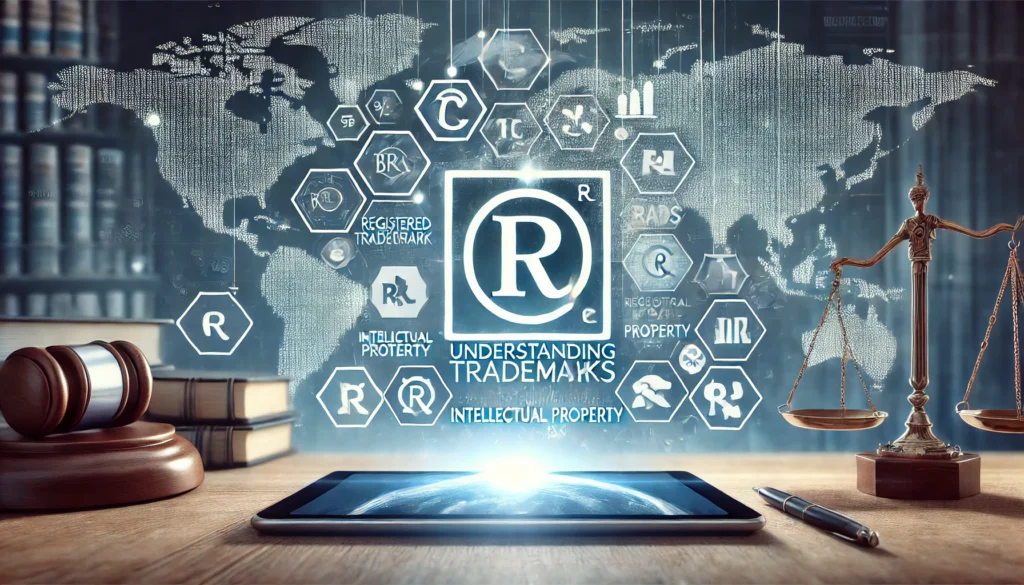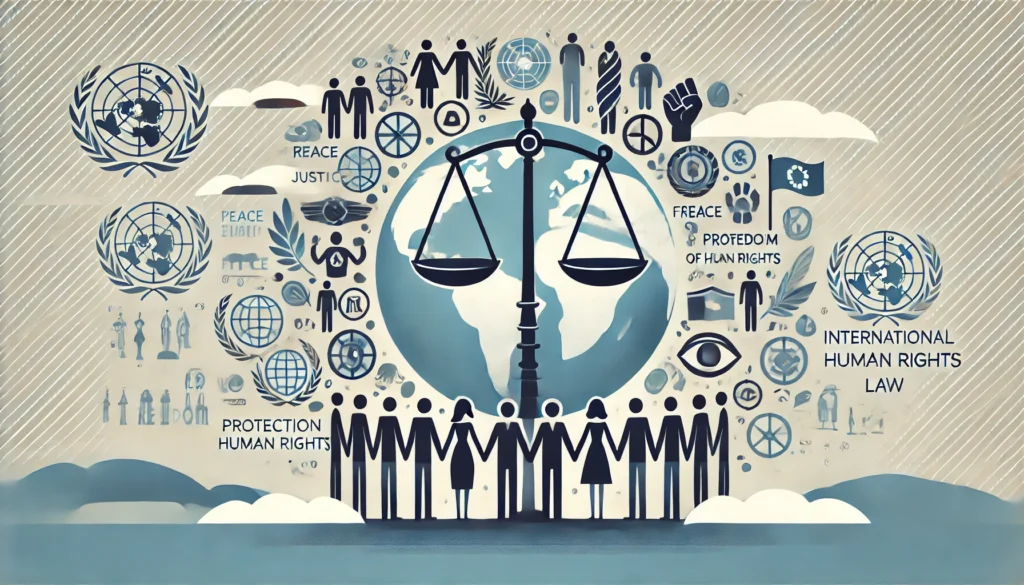Published On: October 31st 2025
Authored By: Nisha Kumari
S.S Khanna Girls Degree College, Prayagraj, University of Allahabad
Abstract
A healthy and clean Environment is essential for all the living organisms. But, with the development we started pollute, damage or harm the environment that is not a good indication. So, the protection of environment certain laws, principles, directives, policies and constitutional provisions are made. The Main purpose of Environmental law is to protect, conserve and maintain the balance between the needs of present and future generations i.e Sustainable development.
This Article discussed about the scope of Article 21 and how the environment becomes the fundamental rights under Article 21.The judiciary also plays piovtal role in interpreting the scope of Article 21 and considered right to healthy environment is a fundamental right in various landmark cases and introduced Environment Impact Assessment.This Article also deals about the protection and promotion of the sustainable development and certain principles precautionary principle , polluter pays principle etc.
Keywords – Environment, Article 21 of the constitution of India, sustainable development, Environmental Impact Assessment, polluter pays principle, precautionary principle, Role of Judiciary
Introduction
Environment is a part of life for every living organism who resides in this earth. It provides air, water, soil, minerals and other natural resources that is very essential for the healthy life of a living organism. Therefore, with the advancement and development of society, we also need to protect and preserve the environment from pollution, depletion and other things which may harm our environment.
According to section 2(a) of Environment Protection Act, 1986- Environment includes Water, Air and Land and the inter- relationship which exists among and between Water, Air and Land and human beings, other living creatures, plants, Microorganisms and property.[1]
In recent times, the protection of the environment becomes challenging not only for one nation, however it is the problem of all over world. India is also one of the nations which tries to combat the environmental issues. So, for the protection of environment, the legislature and judiciary play a pivotal role. Such as the legislature of India made various laws regarding the protection of environment like Environmental (protection) Act,1986, Air (preservation and control of pollution) Act, 1981, forest conservation Act, 1980 etc.
On the other hand, the judiciary helps to preserve and protect the environment by interpreting the scope of Article 21, by introducing the Environment Impact Assessment, promoting the sustainable development and incorporate some principles like polluter pays principles, public trust doctrine, precautionary principle, etc.
Environmental protection and Article 21 of the constitution of India
Article 21deals with the fundamental rights i.e. right to life and personal liberty. It states that no person shall be deprived of his life and personal liberty except according to procedure established by law.[2] It means this article provides right to citizens as well as non- citizens of India.
Article 21guarantees the right to life and personal liberty which is one of the most expansive provisions under the Constitution of India. Initially, the scope of Article 21 was narrow because it protects individuals only from arbitrary deprivation of life and liberty. But with passes of time, judiciary plays a pivotal role by expanding the scope of Article 21. It includes various dimensions like right to live with dignity, access to education, health, and live in clean and healthy environment. So, the right to live in clean and healthy environment becomes a fundamental right under Article 21 by interpretation of the judiciary. After becoming the fundamental right, nobody has right to violate it.
The scope of Article 21 is wider. Under Article 21, the right to live in clean and healthy environment becomes a fundamental right for an individual. So, if anybody who polluted the environment or try to harm it then it is considered to be the violation of Article 21.
The right to live in a healthy environment included in the dimensions of Article 21 in the case M.C. Mehta v Union of India[3].
In this case, the petitioner filed a petition petition in the Supreme court regarding the Ganga River was polluted due to discharge of toxic materials from the industries.
The Supreme court held that polluted water can cause various diseases and extremely harmful for the public. Therefore, the court ordered that Mahapalika to take immediate action regarding it when the industries failed to comply its responsibility regarding the waste was properly handled and prevent water pollution. The court also held that the right to life under Article 21 includes the right to a healthy and pollution free environment. The Supreme court also acknowledged that a healthy environment is indispensable for living a life with dignity.
This case became a landmark case in India. It sets the way for further judicial developments in Environmental law. This case is often considered to be a turning point for the environmental rights under Article 21.
The Olga Tellis v. Bombay Municipal corporation[4]
This case broadening the scope of Article 21. In this case, the court interpreted the right to life and including the right to livelihood and living conditions of individual that allows him to live with dignity. The interpretation by court broaden scope and cover environmental issues, including the right to adequate housing and live in clean and healthy environment. Hence, the court also observed the urban enviromental issues like slums, sanitation and basic amenities.
Other constitutional provisions and statutes in India for the Environmental protection
There are following constitutional provisions which deals with the protection of environment: –
- Article 48A
This article added in the constitution of India by 42nd constitutional Amendment Act, 1976. It provides the state’s responsibility for the protection of environment and to safeguard the wildlife of the country.
- Article 51A(g)
It provides a fundamental duty to citizens to protect and improve the natural environment including forests, lakes, rivers, wildlife and others.
Statutes made by legislation in India with intention to protect the environment such as: –
- Environmental (protection) Act,1986.
- Air (preservation and control of pollution) Act, 1981.
- Forest conservation Act, 1980 etc.
Sustainable development for environmental protection
The word ‘sustainable Development ‘was first used in the year 1970s by Barbara ward who was the founder of the international institute for Environment and Development.
According to Barbara ward – sustainable development was primarily about the people, their economic and social well being and their aspirations for equity in their relationships with one another in a situation where environment society imbalances could threaten economic and social stability.[5]
The sustainable development as a principle was globally coming into knowledge in the Brundtland Report was released by the United Nations World Commission on Environment and Development in the year 1987. The report provided the proper definition of Sustainable development which is used globally in today’s world.
As per the Brundtland Report, the sustainable development is a development which is sustainable is one that satisfies current requirements without endangering the capacity of future generations to satisfy their own needs. After that it was used in the Stockholm convention, Rio Declaration on Environment and Development and the 2030 Agenda for sustainable development adopted by the United Nations[6].
Definition of Sustainable development
The sustainable development is a mechanism to provide the development for present generation without hampering the needs of future generations. It provides equal opportunity to both present as well as future generations. It helps in the development of a country in such a way to preserve the resources for the upcoming generations.
Objective of sustainable development
The Main objective of the sustainable development is to provide all needs to present as well as future generations and to resolve the tension that exists between the right to a healthy environment and development of the nation.
Scope of sustainable development
The scope of the sustainable development is wide. It covers various aspects related to the economy, social, technology and environmental dimensions. It also includes international cooperation, ethical concerns, good governance and others. For the purpose of balancing the needs of the present and future generations and protection of environment, the sustainable development plays a crucial role in such a way to provide the needs of both generations and protect the environment with these dimensions.
Principles of sustainable development
There are five major principles of sustainable development: –
- Conservation of biodiversity
- Conservation of Ecosystem and Environment
- Population control and management
- Sustainable development of society
- Conservation of human resources
Role of judiciary in sustainable development
The judiciary plays a crucial role in the protection and promotion of the sustainable development. In Vellore Citizens ‘Welfare Forum v Union of India, the Supreme court dealt with the problem of tanneries in Tamilnadu which polluted the with untreated effluents.
In this case, the court adopted certain principles like the precautionary principle and polluter pays principles. The polluter pays principle adopted with intention that if any industries polluted the environment, then, it will be liable to pay the compensation for environmental damages.
The Supreme court also take a step towards the sustainable development that is very essence to maintain balance between the development and environmental protection.
Landmark judicial decisions on environment in India
The Rural Litigation and Entitlement Kendra v. State of Uttar Pradesh[7]
This case is also known as the Dehradun Quarrying Case. It is the first case where in India where issues relating to the environment.
In this case, the plaintiff wrote a letter to the Supreme court about the unauthorised operation of limestone quarries done in the Mussoorie Hill range that causes hazardous effect on the environment. The Supreme court considered the letter of plaintiff as a writ petition.
The Supreme court observed that if any kind of development that becomes reason for the harm of environment will not be considered as a development for real prosperity and economy.
The Supreme court also ordered to stop unauthorised limestone mining in Mussoorie because it harms the environment and prohibit from doing such work.
M.C. Mehta v. Union of India[8]
This case is also known as the Taj Trapezium case. In this case, the M.C. Mehta filed a writ petition which stated that pollution is the main cause of the white marble of Taj Mahal turning into yellow.
The Supreme court observed that this happens due to used of chemicals and coke by the industries. Therefore, the court ordered 292 industries to use safer fuels like propane instead of coal otherwise they would have to relocate.
Subhash Kumar v. State of Bihar[9]
In this case, the petitioners filed a public interest litigation against two steel companies. They dumped industries waste into Bokaro river which causing health risk to the public. In return, the defendant companies claimed that they followed the Boards instructions for the prevention of pollution.
The court dismissed the suit on the ground that the Board had taken steps to prevent pollution from the waste discharge by the companies.
Conclusion
Environmental jurisprudence came into existence for the protection and prevention of Environment from pollution, damage and harm. In India there are various constitutional provisions and legal framework which deals with the Environmental protection. India also adopted certain principles by international conventions like Stockholm convention and Rio convention. The sustainable development is also protected and promoted in India to maintain balance between the present generation needs and future generation’s needs. The judiciary interpreted Article 21 in many landmark cases and expand its scope.
References
[1] Environmental (Protection) Act, 1986, section 2(a)
[2] The Constitution of India, Article 21
[3] M.C. Mehta v Union of India, AIR 1988 SC 1037
[4] The Olga Tellis v. Bombay Municipal corporation, 1986 AIR 180
[5] https://www.iied.org/sites/default/files/pdfs/migrate/11500IIED.pdf accessed 9 September 2025
[6] https://www.un.org/en/academic-impact/sustainability accessed 10 September 2025
[7] The Rural Litigation and Entitlement Kendra v. State of Uttar Pradesh, AIR 1985 SC 652
[8] M.C. Mehta v. Union of India AIR 1997 SUPREME COURT 734
[9] Subhash Kumar v. State of Bihar, AIR 1991 SC 420




